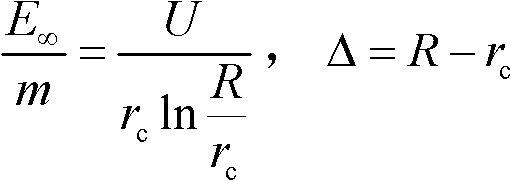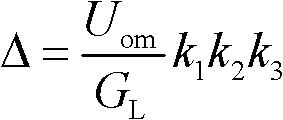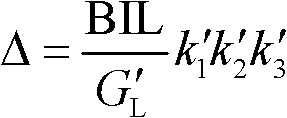Insulation Thickness Design Method for High Voltage XLPE DC Cable
A cross-linked polyethylene, DC cable technology, applied in the direction of conductor/cable insulation, insulator, circuit, etc., can solve the problem of different breakdown strength, meet the requirements of electrical performance, ensure long-term stable operation, and reliable transmission.
- Summary
- Abstract
- Description
- Claims
- Application Information
AI Technical Summary
Problems solved by technology
Method used
Image
Examples
Embodiment Construction
[0071] The present invention will be described in more detail below in conjunction with specific embodiments.
[0072] Using the insulation thickness design method proposed by the present invention to design the insulation thickness of a 110kV single-core XLPE DC cable includes the following steps:
[0073] Step 1: Determine the form of the design voltage. When designing the insulation thickness of the HV XLPE DC cable, the designed voltage form is DC voltage U dc , Polarity reversal voltage U fz And DC voltage superimposed on transient overvoltage U pu ;
[0074] Step 2: Calculate the amplitude of the design voltage, DC voltage U dc The value is 110kV single-core XLPE DC cable long-term rated operating voltage U 0 , Is 110kV, namely U dc = U 0 =110kV, polarity reversal voltage U fz The value is 1.45U 0 , Which is U fz =1.45U 0 =160kV, and the transient overvoltage U is superimposed on the DC voltage pu The value is (1.1K+1.9) U 0 , Which is U pu =(1.1K+1.9)U 0 , K is the Badr c...
PUM
 Login to View More
Login to View More Abstract
Description
Claims
Application Information
 Login to View More
Login to View More - R&D
- Intellectual Property
- Life Sciences
- Materials
- Tech Scout
- Unparalleled Data Quality
- Higher Quality Content
- 60% Fewer Hallucinations
Browse by: Latest US Patents, China's latest patents, Technical Efficacy Thesaurus, Application Domain, Technology Topic, Popular Technical Reports.
© 2025 PatSnap. All rights reserved.Legal|Privacy policy|Modern Slavery Act Transparency Statement|Sitemap|About US| Contact US: help@patsnap.com



